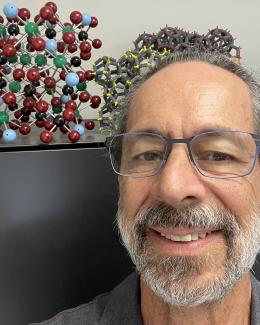Abstract
Cerium activated rare-earth tri- halides represent a well-known family of high performance inorganic rare-earth scintillators - including the high-light-yield, high-energy-resolution scintillator, cerium-doped lanthanum tribromide. These hygroscopic inorganic rare-earth halides are currently grown as single crystals from the melt - either by the Bridgman or Czochralski techniques – slow and expensive processes that are frequently characterized by severe cracking of the material due to anisotropic thermal stresses and cleavage effects. We have recently discovered a new family of cerium-activated rare-earth metal organic scintillators consisting of tri-halide methanol adducts of cerium and lanthanum – namely CeCl3(CH3OH)4 and LaBr3(CH3OH)4:Ce. These methanol-adduct scintillator materials can be grown near room temperature from a methanol solution, and their high solubility is consistent with the application of the rapid solution growth methods that are currently used to grow very large single crystals of potassium dihydrogen phosphate. The structures of these new rare-earth metal-organic scintillating compounds were determined by single crystal x-ray refinements, and their scintillation response to both gamma rays and neutrons, as presented here, was characterized using different excitation sources. Tri-halide methanol-adduct crystals activated with trivalent cerium apparently represent the initial example of a solution-grown rare-earth metal-organic molecular scintillator that is applicable to gamma ray, x-ray, and fast neutron detection.





